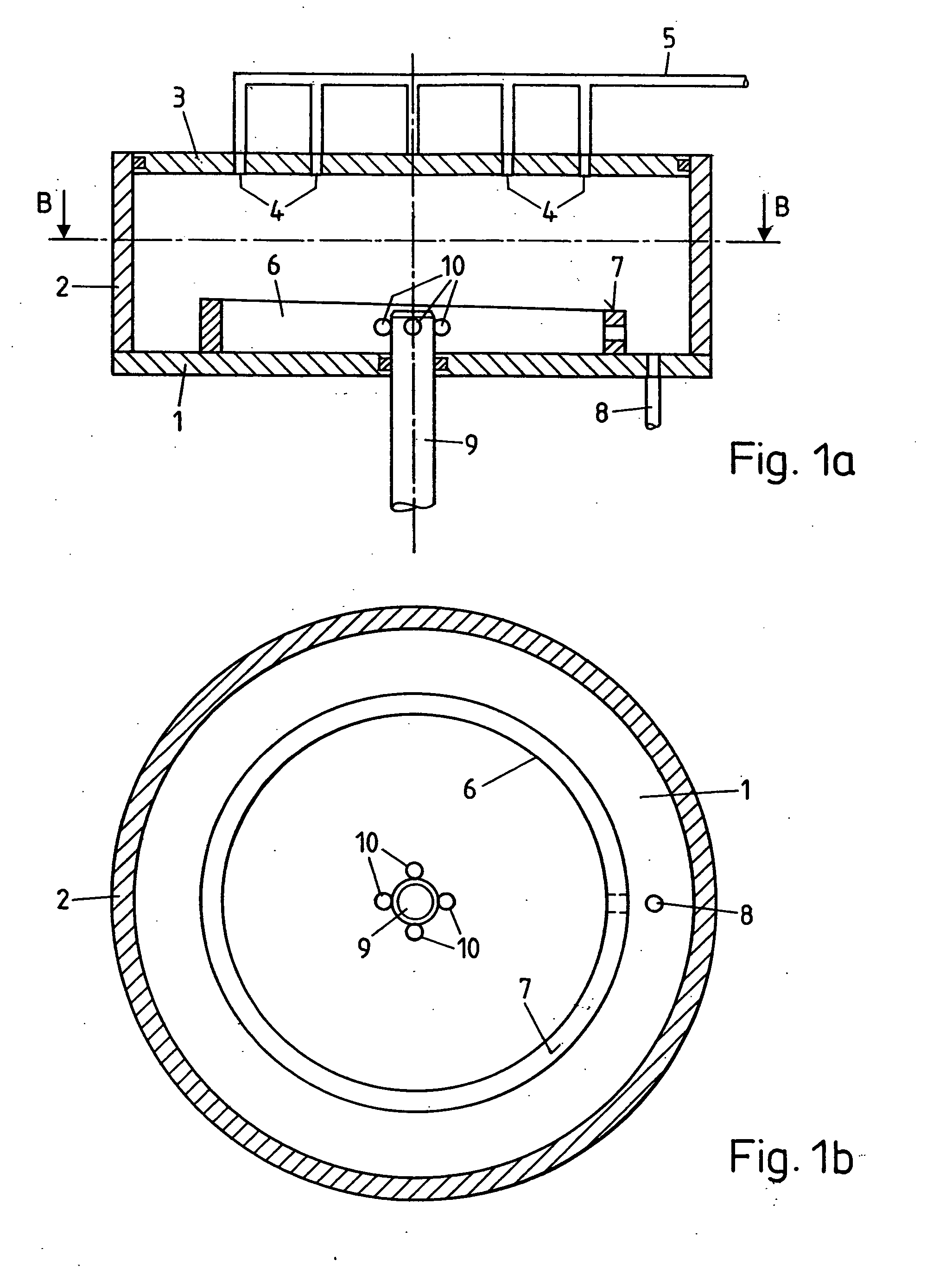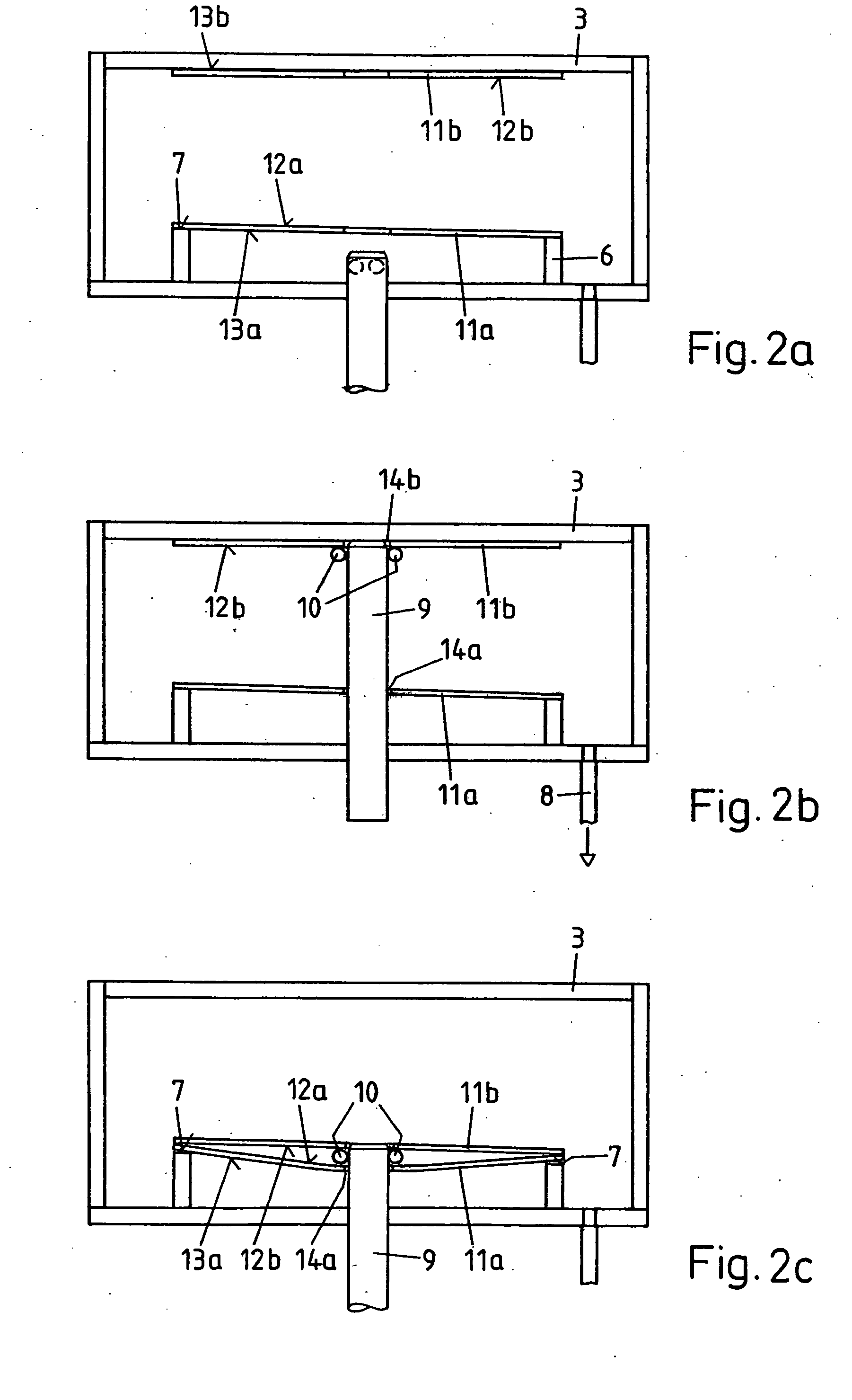Method for the bonding of disk-shaped substrates and apparatus for carrying out the method
a technology of disk-shaped substrates and adhesive layers, which is applied in the direction of instruments, auxiliary welding devices, soldering apparatuses, etc., can solve the problems of reducing the quality of the output, misreading stored data, and variable thickness of the adhesive layer, so as to achieve short cycle time and high and constant quality of outpu
- Summary
- Abstract
- Description
- Claims
- Application Information
AI Technical Summary
Benefits of technology
Problems solved by technology
Method used
Image
Examples
Embodiment Construction
[0023] The apparatus comprises a cylindrical vacuum chamber with a base plate 1, a circumferential side wall 2 and a removable cover 3. Holes 4 which are connected via a suction line 5 to a suction pump (not shown) are distributed over the inside surface of the latter so the cover 3 can serve as a suction holding device. The base plate 1 carries a support 6, a web concentric with the side wall 2 whose annulus-shaped plane upward-facing support surface 7 is slightly slanted (to the right in FIG. 1a), defining a plane which encloses an angle of between 1° and 3°, preferably about 2° with the inside of the cover 3. From the bottom of the vacuum chamber, i.e. through the base plate 1 an evacuation line 8 leads to a vacuum pump (not shown). A central support pin 9 is extendable through the base plate 1. Its position can vary between a lower limit position where its tip lies below the support surface 7 and an upper limit position where the tip touches or nearly touches the cover 3. At a p...
PUM
| Property | Measurement | Unit |
|---|---|---|
| circumference | aaaaa | aaaaa |
| circumference | aaaaa | aaaaa |
| pressure | aaaaa | aaaaa |
Abstract
Description
Claims
Application Information
 Login to View More
Login to View More - R&D
- Intellectual Property
- Life Sciences
- Materials
- Tech Scout
- Unparalleled Data Quality
- Higher Quality Content
- 60% Fewer Hallucinations
Browse by: Latest US Patents, China's latest patents, Technical Efficacy Thesaurus, Application Domain, Technology Topic, Popular Technical Reports.
© 2025 PatSnap. All rights reserved.Legal|Privacy policy|Modern Slavery Act Transparency Statement|Sitemap|About US| Contact US: help@patsnap.com



